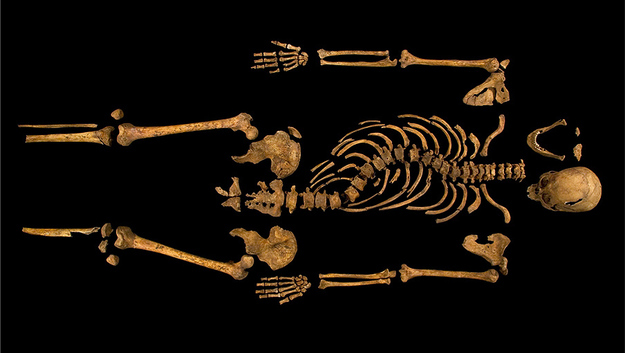British archeologists announced this morning the skeleton, found in September 2012, is Richard III, the last Plantagenet king of England.
During a press conference held at the University of Leicester, head archaeologist Richard Buckley stated that DNA evidence confirmed "beyond reasonable doubt it's Richard."

Youngest brother to Edward IV, Richard III spent most of his life as the Duke of Gloucaster. When his brother died of illness in 1483, Richard wrested control of the country from Edward's wife Elizabeth Woodville, sending both his young nephews to the Tower of London. They would never be seen again.
During his short and tumultuous reign, only 26 months, Richard tried to rally the country to his side but England could not overlook the mysterious disappearance of the royal children and his borderline incestuous relationship with his teenage niece Elizabeth.
Richard was the last English king to die in battle, falling to the future Henry VII in 1485 at Bosworth. Disgraced in death by the new Tudor line, the former king of England was given a hasty burial beneath a Leicester church. When the church was demolished in the 16th century during the Reformation, Richard's grave was lost to time, with the site eventually being paved over for a city council parking lot.
Perhaps the last Plantagenet king would've have been consigned to this fate if not for the efforts of a small group of historians. With exacting detail they traced the DNA of the Plantagenet line all the way back through the generations to Leicester. They then narrowed down the number of places monks would have buried the dead and got a permit to excavate the parking lot. Within days, the skeletal remains had been uncovered.

Preliminary findings revealed the skeleton suffered from a curvature of the spine brought on by scoliosis, an affliction Richard III was well-documented to have. The remains were male but had a slender, almost feminine build, another characteristic historians of the time attributed to King Richard. Despite physical limitations, the bones told a story of violence, including a wound to the skull that would've penetrated his head up to 4 inches causing almost instant death. Ten other injuries around the time of death indicated a death during battle. All of this evidence was promising as the team entered the detailed process of DNA testing.
Read all the details of the extensive testing over at the BBC.

